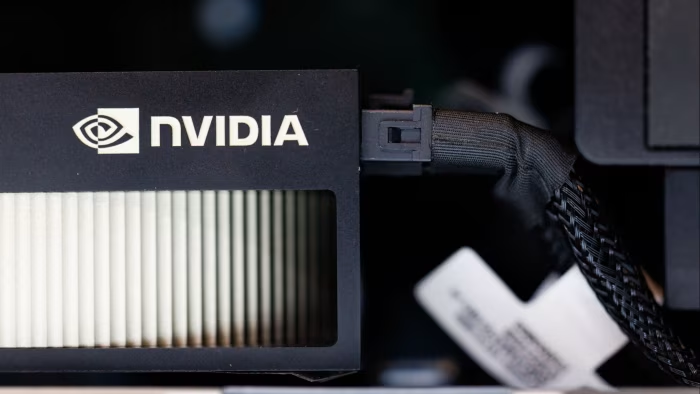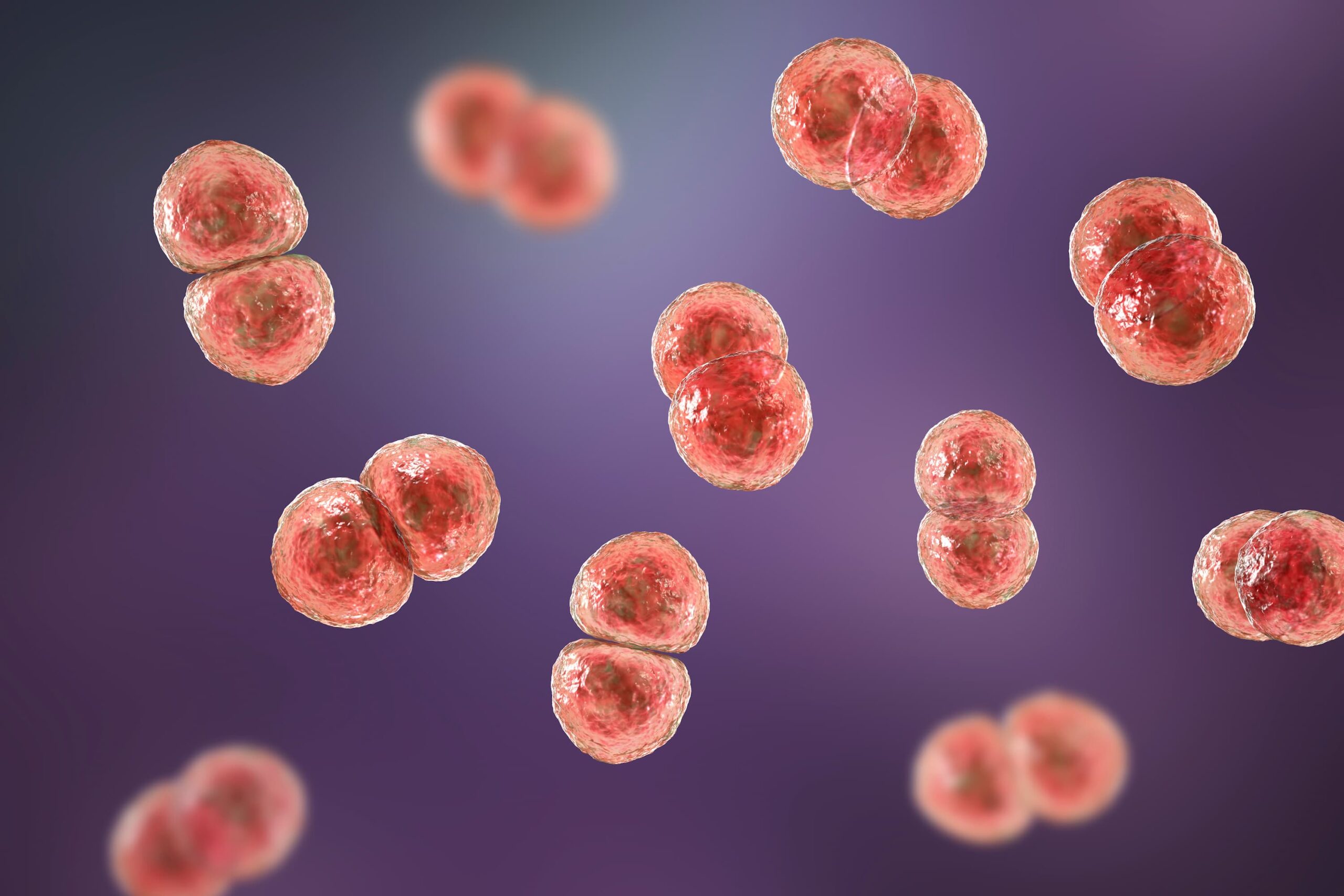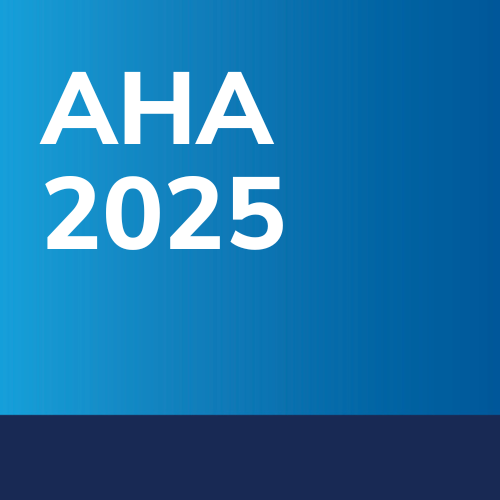Take-Two’s fortunes should mostly rise and fall with its Grand Theft Auto franchise for the foreseeable future. This makes us uneasy. In the near term, buying the stock feels like a coin flip, where trading will be dependent simply on how the…
Author: admin
-

‘He’s showed his character’ – England gather to watch Marler in Celebrity Traitors
Spoiler warning: This article reveals details from The Celebrity Traitors finale
The England team gathered to watch former prop Joe Marler compete in the final of Celebrity Traitors with Marler saying it was “way more stressful” than playing for…
Continue Reading
-

Milano Cortina 2026 – Italy’s world-class venues welcome the Olympic Winter Games
Olympic Games rooted in the local context
Italy has long been a home of champions from all over the world, with venues that have hosted World Cups, World Championships and the Olympic Winter Games. Milano Cortina 2026 builds on this legacy,…
Continue Reading
-

Combination immunotherapy helps overcome melanoma treatment resistance
The University of Cincinnati Cancer Center’s Trisha Wise-Draper, MD, PhD, will present a late-breaking abstract detailing the trial results at the Society for Immunotherapy of Cancer 40th Anniversary Annual Meeting Nov. 7.
Oncolytic…
Continue Reading
-

Afghan official says four civilians killed in border clash with Pakistan during peace talks in Turkiye
ISLAMABAD: Pakistan will decide “in due course” whether to contribute troops to the proposed international stabilization force for Gaza, with the foreign office saying on Friday the decision on the subject would be…Continue Reading
-

Starting 5: Last year’s Emirates Cup Finalists open Group Play
Can’t wait for NBA Cup play to resume tonight with 11 games?
Here’s every court on a loop to keep you busy until tip off.
![[ ]](https://afnnews.qaasid.com/wp-content/uploads/2025/11/1762527926_98_original.gif)
5 STORIES IN TODAY’S EDITION 🏀
Cup Friday: Group Play heats up with 11 games, including 14 teams in Cup…
Continue Reading
-

Tech stocks head for worst week since April after $900bn AI sell-off
Stay informed with free updates
Simply sign up to the Technology sector myFT Digest — delivered directly to your inbox.
US tech stocks are on course for the worst week since President Donald Trump’s “liberation day” tariffs rocked global financial markets in April, as concerns about elevated valuations fuelled a $900bn rout in companies linked to the artificial intelligence boom.
The market value of eight of the most valuable AI-related stocks — including Nvidia, Meta, Palantir and Oracle — has fallen by $911bn since the end of last week.
Trading on Friday morning deepened tech investors’ losses for the week, with Nvidia falling 2.6 per cent in early trading. Other big tech companies whose share prices declined this week included Microsoft, Amazon and Broadcom.
The declines have left the tech-heavy Nasdaq Composite on course for a weekly loss of 4 per cent, its worst five-day run since the index fell 10 per cent after Trump launched his trade war with a flurry of tariff announcements in April.
Nvidia, the world’s most valuable company, has fallen the most in dollar terms over the week, losing more than $430bn in market capitalisation.
Nvidia’s chief executive Jensen Huang told the Financial Times this week that he expected China was ultimately “going to win the AI race” against the US.
He subsequently tried to row back on the comments, saying that China was “nanoseconds behind America in AI”, but the remarks came as the Silicon Valley chipmaker’s hopes were waning that the US government would allow it to sell a version of its latest Blackwell AI processor to Chinese customers.
Chinese competitors are already narrowing the technical lead held by OpenAI, Microsoft, Google, Meta and Anthropic, which are all making huge investments in AI infrastructure, much of it based on Nvidia’s chips.
This week’s debut of Beijing-based Moonshot AI’s new Kimi K2 Thinking model was hailed as the latest breakthrough by Chinese developers, with reports suggesting it cost less than $5mn to train.
“Is this another DeepSeek moment?” Thomas Wolf, co-founder of AI developer platform Hugging Face, said in a social media post about Kimi. The release of DeepSeek’s low-cost R1 model sparked a Wall Street panic in January that wiped $589bn from Nvidia’s market value in a single day.
Comments this week by OpenAI’s finance chief Sarah Friar that the $500bn AI group might look to the US government to provide a funding “backstop” also triggered speculation about its finances.
OpenAI’s chief executive Sam Altman sought to calm anxiety in a social media post on Thursday, saying: “We do not have or want government guarantees for OpenAI data centres.”
He predicted that OpenAI’s revenues would “grow to hundreds of billion[s] by 2030”, though that figure may fall below its AI infrastructure commitments, which he said totalled $1.4tn over the next eight years.
Continue Reading
-

Less Common Pneumococcal Serotypes Cause More Severe Community-Acquired Pneumonia
Certain serotypes included in the pneumococcal 20-valent conjugate vaccine (PCV20) can cause more severe community-acquired pneumonia (CAP) while being of relatively lower prevalence among the population, according to research presented by…
Continue Reading
-

JACC Journals Publish Latest Science From AHA 2025
AHA 2025 officially begins this weekend in New Orleans, featuring key science simultaneously published across ACC’s JACC Journals, including JACC, JACC: CardioOncology, JACC: Advances, JACC: Case Reports, JACC: Heart Failure and JACC: Cardiovascular Imaging. Highlights include:
JACC
MESA, UK Biobank Data: Lp(a) and IL-6 Predict CHD, ASCVD Risk
Lipoprotein a (Lp[a]) and interleukin-6 (IL-6) are independent predictors of coronary heart disease (CHD), defined as myocardial infarction or resuscitated cardiac arrest, and when combined the two biomarkers identified patients at the highest risk of CHD, according to research in two primary prevention cohorts, the Multi-Ethnic Study of Atherosclerosis (MESA) (n=6,514) and the UK Biobank (n=26,574), published in JACC.
The hazard ratios (HRs) for CHD were 1.13 and 1.22 for Lp(a) and IL-6, respectively, in MESA and 1.11 and 1.19 in UK Biobank cohort. Similar results were found for atherosclerotic cardiovascular disease and peripheral vascular disease. The analysis conducted by Harpreet Bhatia, MD, MAS, FACC, et al., found the HRs for CHD for LP(a) plus IL-6 were 1.72 in MESA and 1.39 in the UK Biobank cohort.
“The findings of our study support the potential incorporation of IL-6 in a primary prevention setting in addition to Lp(a); at the minimum, IL-6 may be considered a risk enhancer as it identifies individuals with increased cardiovascular risk independent of traditional risk factors, hsCRP and Lp(a),” write Bhatia and colleagues.
ECV’s Prognostic Ability in ATTR
Extracellular volume (ECV) identified on cardiovascular magnetic resonance (CMR) imaging provides a quantitative framework for staging and therapeutic planning in transthyretin amyloidosis (ATTR) by directly quantifying myocardial amyloid load and defining reproducible thresholds to stratify burden and refine risk prediction, according to findings published in JACC. Study authors Awais Sheikh, MBChB, et al., analyzed all-cause mortality in 1,541 patients undergoing CMR for ATTR, classified as TTR-variant carriers, extra-cardiac ATTR, early stage ATTR-CM or overt ATTR-CM. At a median 2.8-year follow-up, results showed the ECV had a strong prognostic ability with <30% excluded and ≥40% confirmed cardiac involvement, independently predicting mortality across categories: <30% none; 30-39% mild, 40-49% moderate, 50-59% moderate-severe and ≥60% severe (HR, 1.22 per 10% increase; p<0.001). “ECV outperforms traditional staging tools,” write the authors. “These data establish ECV as a quantitative biomarker that bridges clinical practice and trial design, translating amyloid biology into actionable measurement.”
JACC: CardioOncology
ALLSTAR: Gamification For Breast, Prostate Cancer Survivors
Gamification increased physical activity among Black and Hispanic cancer survivors compared with attention control alone, according to research published in JACC: CardioOncology. The clinical trial randomized 150 Black and Hispanic breast and prostate cancer survivors treated with cardiotoxic therapy and with at least one risk factor for cardiovascular disease (mean age, 64 years; 81% women; 64% Black; 35% Hispanic) to either attention control (n=76) or gamification (n=74), both featuring a wearable device to track daily steps and self-determined daily step goals. Gamification participants were awarded points each week, with points lost if they did not reach their goals. Those who kept most of their points each week were moved up a level, with participants at the highest level receiving a trophy at the end of the intervention.
Results showed that gamification participants had a greater mean daily step average and spent more time on weekly moderate-vigorous physical activity than control in both the 24-week intervention period (+759 steps, p=0.007; +16 minutes, p=0.010) and 12-week follow-up period (+581 steps, p=0.070; +11 minutes, p=0.048). Noting the greater health barriers historically marginalized communities can face within health systems, “by leveraging principles from behavioral economics, including precommitment, status quo bias, the endowment effect, goal gradients, the fresh start effect, and social accountability, the intervention addresses common barriers to behavior change,” write study authors Alexander C. Fanaroff, MD, et al.
JACC: Advances
FH Clinical, Genetic Signs in CAD Risk Assessment
Clinical and genetic signatures of familial hypercholesterolemia (FH) were useful in determining the risk of coronary artery disease (CAD) among patients with severe hypercholesterolemia, beyond the incorporation of LDL-C alone, according to original research published in JACC: Advances. In the retrospective study, investigators Hayato Tada, MD, et al., evaluated data from 1,273 patients (mean age, 49; 50% women) with LDL-C ≥180 mg/dL. Results showed that at a median follow-up of 12.4 years, 144 CAD events occurred. Patients with either an FH-variant (n=298) or clinical signs of FH (n=199) had a higher risk of developing CAD events (HR, 1.44, p=0.007; HR, 2.27; p<0.001, respectively). Those participants with both FH-variant and clinical signs (n=548) had a five-fold higher risk for CAD (p<0.001) after adjustment for known risk factors and LDL-C year score. “We strongly suggest assessing these clinical and genetic signatures of FH and then treating them differently based on their risk strata,” write the investigators. “These procedures may be reasonable not only for accurate diagnosis but also for personalized medicine.”
JACC: Case Reports
Quality Improvement Project: Optimizing Telemetry Use
In a quality improvement project presented in JACC: Case Reports, Hera Jamal, DO, et al., outline a low-cost, resident-led initiative that improved telemetry ordering practice at a tertiary care center. The initiative offered an educational lecture to internal medicine residents and teaching hospitalists regarding AHA best practice guidelines and posted physical reminders near telemetry stations. Results from 156 preintervention admissions and 110 postintervention showed an increase from 61% to 74% on the proportion of appropriate telemetry orders upon admission (p=0.03), although no significant change was observed at 48 hours (38% vs. 39%, p=1.00). Jamal and colleagues write on their initiative: “This is important given the established safety of discontinuing unnecessary telemetry in nonintensive care settings and the burden that continued use places on both patients and healthcare staff.”
JACC: Heart Failure
Survival in Patients with Advanced Symptoms of oHCM Undergoing Surgical Myectomy
Patients with advanced symptoms of obstructive hypertrophic cardiomyopathy (oHCM) undergoing surgery myectomy (SM) had worse long-term survival compared to those with lesser symptoms – despite earlier time to surgery from initial presentation, according to research published in JACC: Heart Failure. The observational study stratified 3,546 oHCM patients by NYHA class upon initial presentation, and at a mean follow-up of 12 years recorded 698 composite events, including 661 deaths, 11 cardiac transplants and 51 appropriate ICD discharges. Even with time to initial surgery shorter in the higher classes, the number of events grew from Class I (70 events, 19% of patients) to II (232, 16%) to III (396, 23%; p<0.001). “Patients undergoing SM at an earlier symptomatic stage demonstrate superior long-term outcomes, underscoring the importance of timely referral before advanced disease occurs,” write study authors Shada Jadam, MD, et al.
JACC: Cardiovascular Imaging
Efficacy of Treadmill Stress Echocardiography in HCM
Treadmill stress echocardiography (TSE) has diagnostic and prognostic value in patients with asymptomatic HCM, according to a study by Sana Sultana, MD, et al., published in JACC: Cardiovascular Imaging. Of 1,299 NYHA Class I asymptomatic HCM patients undergoing TSE, 22% were found to have latent dynamic left ventricular outflow tract obstruction (LVOTO), only observed during the testing. Furthermore, 37% failed to achieve age-sex predicted metabolic equivalents (ASP-METs) ≥85%. At a mean follow-up of 12.1 years, ASP-METs <85%, undetected without TSE, was associated with increased mortality (17% vs. 12%) as well as lower survival rates at one, 10, 15 and 20 years. “The findings challenge the reliability of patient-reported symptom status and underscore the limitations of subjective self-reported assessments in clinical decision-making,” write the authors. “Whenever feasible, it is important to objectively assess functional capacity and record latent dynamic LVOTO using exercise echocardiography.”
Click here to read all the articles simultaneously published in the JACC Journals.
Clinical Topics:
Dyslipidemia, Heart Failure and Cardiomyopathies, Noninvasive Imaging, Atherosclerotic Disease (CAD/PAD), Homozygous Familial Hypercholesterolemia, Lipid Metabolism, Primary Hyperlipidemia, Acute Heart Failure, Heart Failure and Cardiac Biomarkers, Echocardiography/Ultrasound
Keywords:
AHA Annual Scientific Sessions, AHA25, Echocardiography, Stress, Coronary Artery Disease, Amyloidosis, Familial, Interleukin-6, Cardio-oncology, Hypercholesterolemia, Ventricular Outflow Obstruction, Quality Improvement, Heart Failure, Biomarkers, Atherosclerosis, Magnetic Resonance Spectroscopy, Cardiomyopathy, Hypertrophic, Hypertrophic Cardiomyopathy, Hyperlipoproteinemia Type II, Heart Disease Risk FactorsContinue Reading
-

Maccabi fan ban was due to hooliganism, says West Midlands Police
Phil Mackie,Midlands correspondent and
Rachel Russell,West Midlands
 PA Media
PA MediaMore than 700 officers from across the country policed the game at Villa Park West Midlands Police has defended keeping silent over the “significant hooliganism” among…
Continue Reading